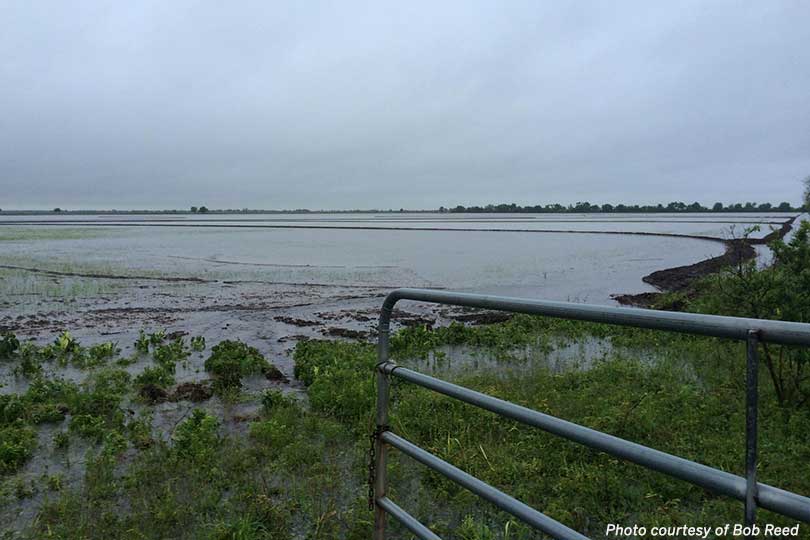By Shala Watson
TFB Public Relations Intern
Recent heavy rains in Matagorda County this week have brought mixed feelings for farmers along the Gulf Coast. The rains brought much-needed moisture to row crops, like corn and grain sorghum, but it’s also causing flooding issues for rice farmers.
Although rice is a crop that is grown in water, the fields aren’t permanently flooded until the rice is more mature. If the crop stays in the water for too long when it’s young, it will kill the plant.
“We were in the process right now of flushing some of these fields, which we do in the early growing season to incorporate herbicides and also to give the crop a drink,” Bob Reed, Matagorda County rice farmer and Texas Farm Bureau state director, said in an interview with the Texas Farm Bureau (TFB) Radio Network.
Reed said they received anywhere from 3-3.8 inches of rainfall within three hours on Tuesday night. The sudden downpour, combined with the water already in the fields from flushing, caused damage to the levees in his rice fields.
“What has to be done then is once the water drains off and the field firms back up, then we have to go back in the field and repair all of these levees—patch the holes in them so that they do hold water when we need them to,” Reed said.
He noted although it doesn’t happen every year, this isn’t uncommon and “that it’s part of the rice farming business.”
“I don’t expect the crop to suffer any damage. The water will get off the fields soon enough,” Reed said. “The damage is just going to be the levees and then the extra labor of having to patch them all back.”
Even with the levee damage, Reed still expects good prospects for the rice season. He said the plants have received what they need to keep growing with good temperatures and enough sunshine.
Reed said the rainfall was very timely for his corn and sorghum crops, and they’re off to a good start.
Although rain isn’t an issue for the row crops, Reed said they have been dealing with other common problems—feral hogs and Sandhill cranes.
“We have Sandhill cranes that are still here, that haven’t migrated out yet,” Reed said. “When the corn plant emerges out of the ground, they’ll come in…and pull the plant up and eat the seed off the bottom of it.”
He said feral hogs aren’t as big of a problem this spring as they have been in the past.
“We’ve been working really hard to try to control the feral hogs,” Reed said. “We haven’t eliminated the problem, but I feel like we’re a little bit ahead of the curve with them at this point in time.”
“There’s plenty of time for problems along the way, and there always are,” Reed said. “I’m sure there will be again this year. But those are just things that when they happen, you assess them and address them and you go on down the road.”

